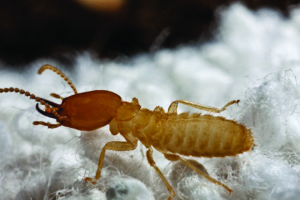Do All Termites Produce Greenhouse Gas Emissions?
Termites are not just out to destroy people’s homes. It is becoming common knowledge that termites are highly beneficial to the natural environment. Obviously, termites feast on cellulose within wood. Termites are one of the very few animals that can successfully digest cellulose. This makes termites a necessity in forested regions where dead plant matter accumulates rapidly. This dead plant matter piles up over otherwise nutrient-rich areas of soil, effectively forming a barrier between soil and its required nutrients like the sun and air. Termites quickly recycle this dead plant debris into forms of matter that help to fertilize soil. However, termites can also cause damage to the environment by passing gas. Termites emit high amounts of methane when passing gas. This can be problematic as methane is a greenhouse gas that is contributing to climate change. Although all termite species emit methane into the atmosphere, some species can be considered worse offenders than others.
Tropical regions of the world see the highest termite populations. One study found that termites comprise ten percent of all animal biomass in the tropics. Given the excessively small body size of termites, you can see why this is an impressively high statistic. Many entomologists and other experts agree that termites account for a greater amount of biomass than any other type of insect on the planet. In other words, there exist massive amounts of termites in the world. Given the high amount of termites existing today, the amount of methane that they emit into the atmosphere is a concern to many experts.
Years ago, researchers released a study claiming that termites account for forty percent of the global methane gases emitted into the atmosphere each year. More recent and thorough studies have revealed that some termite species emit far more methane gasses than other species. For example, termites that feed on soil produce about ten times the amount of methane that wood-feeding termites produce. In reality, recent reports claim that the methane produced by termites equals around two to five percent of all methane emissions in the atmosphere. However, this is still an amazingly high amount given the fact that termites are tiny insects, as opposed to large methane-producing types of livestock.
Do you think that termites should be considered equal to livestock when it comes to emitting hazardous methane emissions?
Tags: Termites




